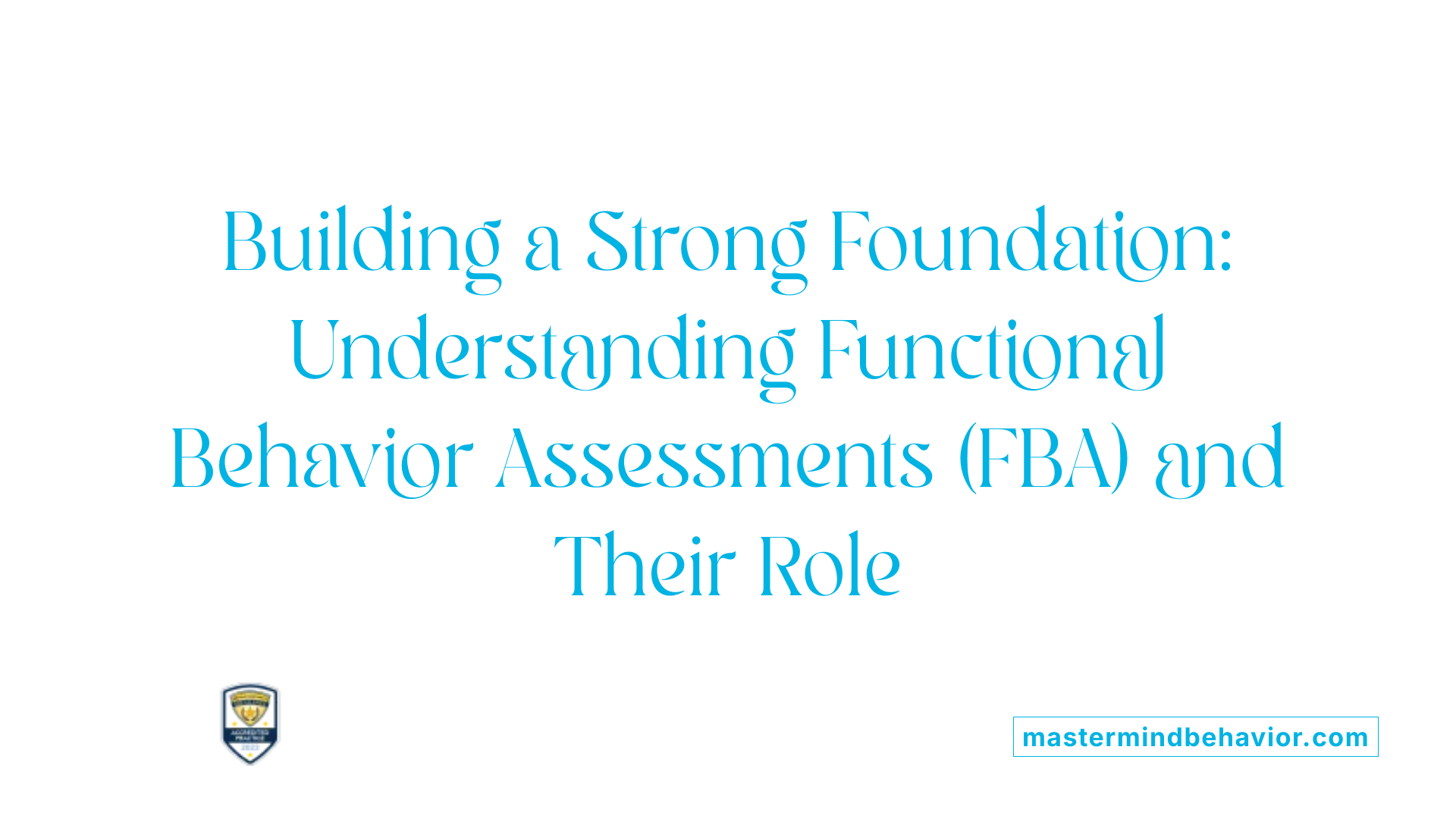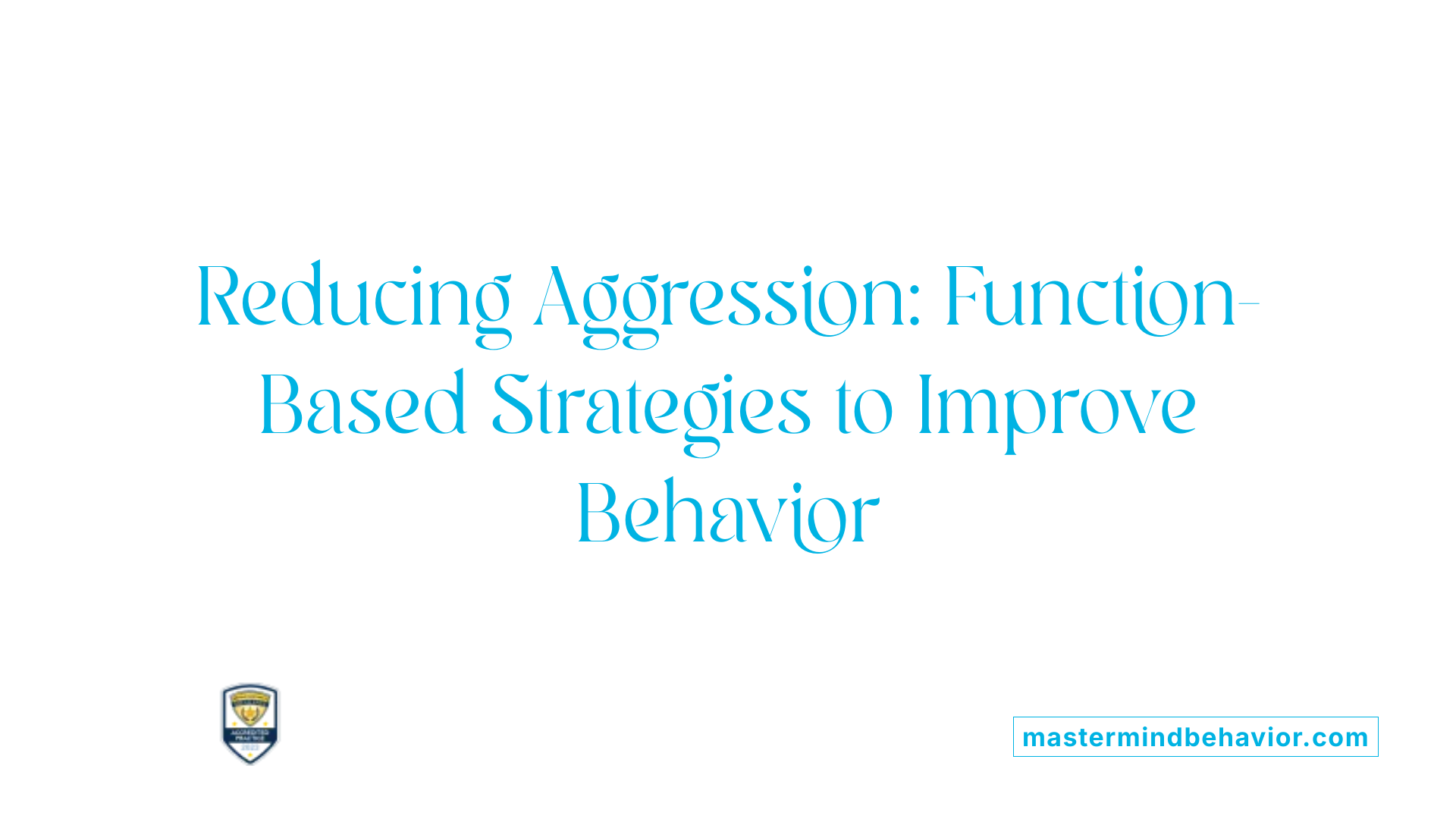ABA Therapy To Reduce Argumentative Behavior In Children

Understanding ABA and Its Impact
Applied Behavior Analysis (ABA) therapy stands as a pivotal intervention for children with autism spectrum disorder (ASD), especially those exhibiting argumentative and aggressive behaviors. This therapy focuses on using evidence-based behavioral science to modify challenging behaviors and teach healthy alternatives. By analyzing the reasons behind behaviors and tailoring strategies accordingly, ABA helps children communicate their needs effectively and improves their overall quality of life. This article explores how ABA therapy functions, the techniques employed, its effectiveness, and the collaborative efforts required to reduce argumentative behaviors in children with autism.
What Is Applied Behavior Analysis (ABA) Therapy?

What Is Applied Behavior Analysis (ABA) Therapy and How Does It Help Individuals with Autism?
Applied Behavior Analysis (ABA) therapy is a scientifically supported behavioral intervention aimed at improving essential skills and reducing problematic behaviors in individuals with autism spectrum disorder (ASD) and intellectual disabilities. It applies principles of learning and behavior science, such as positive reinforcement, to teach new, healthier behaviors and enhance quality of life.
Principles of Learning Applied in ABA
ABA therapy is founded on the idea that behaviors are learned and can be changed. It involves assessing environmental factors that influence behaviors through methods like Functional Behavior Assessment (FBA) and Functional Analysis (FA). These assessments help identify the reasons behind behaviors so interventions can be tailored accordingly.
Individualization of ABA Programs
ABA programs are highly individualized, crafted based on each child's environment, needs, and the functions of their behaviors. Board Certified Behavior Analysts (BCBAs) design and oversee these plans, ensuring strategies like teaching alternative communication methods and modifying environments suit the unique learner.
Goals and Outcomes of ABA
The primary goal is to increase positive social, communication, and daily living skills while reducing challenges such as aggression or self-injury. Early, intensive ABA therapy—often recommended at 25 or more hours weekly—has proven effective in improving developmental outcomes for children with autism.
Role of Positive Reinforcement
Rather than punishing undesirable behaviors, ABA emphasizes reinforcing positive behaviors to encourage skill development. Techniques include functional communication training, environmental modifications, and data-driven adjustments, all promoting consistent progress and better behavioral choices.
Through these methods, ABA therapy supports individuals with autism by providing structured, compassionate, and evidence-based interventions tailored to their unique needs.
Who Provides ABA Therapy and How Is It Delivered?

Who provides Applied Behavior Analysis therapy?
Applied Behavior Analysis (ABA) therapy is primarily provided by licensed and certified professionals. Board Certified Behavior Analysts (BCBAs) are the specialists who oversee and design individualized therapy plans based on comprehensive assessments such as Functional Behavior Assessments (FBA). These professionals ensure treatments are evidence-based and tailored to the unique needs of each child.
What role do Board Certified Behavior Analysts (BCBAs) play?
BCBAs serve as the clinical supervisors of ABA therapy. They conduct assessments, develop behavior intervention plans, and monitor progress to ensure interventions effectively address problem behaviors and skill deficits. Their expertise guides the therapy's direction and customizes strategies to optimize outcomes.
How are therapists and behavior technicians involved?
ABA therapists and Registered Behavior Technicians (RBTs) implement the therapy directly during one-on-one sessions. Working under BCBA supervision, they carry out intervention strategies such as positive reinforcement, functional communication training, and visual supports. Their interaction with the child focuses on teaching new skills and reducing problematic behaviors through consistent, data-informed practice.
Is family involvement part of ABA delivery?
Yes, family training and involvement are crucial components of ABA therapy. Caregivers are trained to collect data and apply strategies consistently across environments, promoting generalization and maintenance of learned behaviors. Collaboration between therapists, BCBAs, and families enhances the overall effectiveness of interventions.
How is supervision and individualization maintained?
Ongoing supervision by BCBAs ensures that therapy programs remain individualized and responsive to the child’s progress. They review data regularly to adjust plans and implement new strategies as necessary. This structured oversight guarantees that ABA remains a dynamic, goal-oriented treatment aligned with the child's developmental and behavioral needs.
Assessment: The Foundation of Effective Behavior Intervention

What is Functional Behavior Assessment (FBA) and Functional Analysis (FA)?
Functional Behavior Assessment (FBA) is a systematic process used in Applied Behavior Analysis (ABA) to identify the causes and triggers of problematic behaviors in children with autism spectrum disorder (ASD) or intellectual disabilities. It focuses on discovering the environmental antecedents (what happens before a behavior) and consequences (what happens after the behavior) that maintain these behaviors.
Functional Analysis (FA), a component of FBA, involves a more controlled and experimental approach to systematically test hypotheses about the function of a behavior. It is considered the most supported practice for uncovering why problem behaviors occur.
Why Identify Environmental Antecedents and Consequences?
Understanding what triggers and maintains challenging behaviors helps in creating tailored, effective interventions. For example, some behaviors may occur to gain attention, avoid tasks, or achieve access to desired items or activities.
Understanding the Functions of Problematic Behavior
Once the function of behavior is identified—such as seeking attention, escaping a task, or accessing a specific item—therapists can design targeted strategies. These may include teaching alternative ways to communicate needs or modifying the environment to reduce triggers.
Case Study: Aggression and iPad Access
Consider a 10-year-old child displaying aggressive behaviors. An FBA revealed that the aggression served the function of gaining access to an iPad. By understanding this, therapists implemented strategies such as teaching the child to use verbal requests for the iPad and establishing clear routines with visual schedules. This intervention significantly reduced aggressive incidents by providing a socially acceptable way to meet the child's needs.
The assessment process is essential because it directs personalized interventions that not only reduce problematic behaviors but also enhance communication and overall quality of life for children receiving ABA therapy.
Core Techniques in ABA Therapy

What are the common techniques used in ABA therapy?
Applied Behavior Analysis (ABA) therapy employs a variety of structured and evidence-based techniques to teach new skills and reduce challenging behaviors. One fundamental approach is discrete trial training (DTT), which involves breaking down skills into small, manageable steps and teaching them systematically. In DTT, each trial consists of a clear instruction, the child's response, and a consequence like a reward, reinforcing learning through repetition.
Another widely used technique is modeling, where therapists or caregivers demonstrate a behavior for the child to observe and imitate. This method supports learning by example and helps children understand expected behaviors.
To encourage independence, ABA uses prompting and fading, starting with prompts or cues to initiate a behavior and gradually removing these prompts so the child can perform the skill unaided. This technique ensures the child builds confidence and mastery.
Complex behaviors can be taught via behavior chaining, which divides a sequence of actions into smaller steps taught in order, such as handwashing or dressing. This approach helps children learn multi-step routines effectively.
Reinforcement plays a vital role, especially positive reinforcement, where desirable behaviors are rewarded to increase their occurrence. Complementary strategies include extinction (withholding reinforcement for unwanted behaviors) and redirection, to guide the child toward appropriate responses.
To support communication and understanding, visual supports like picture schedules, social stories, and visual cues are often incorporated. These tools help children grasp expectations and transitions, reducing confusion and frustration.
ABA therapy combines these techniques within tailored treatment plans, adapting methods to each child's unique needs and environment. This individualized, data-driven approach ensures progressive skill building and meaningful behavior changes.
Addressing Argumentative and Aggressive Behaviors Through Function-Based Intervention

What is the function of argumentative and aggressive behavior in children with autism?
Aggressive behaviors often serve as a form of communication when children with autism have unmet needs like seeking attention or accessing preferred items. A Functional Behavior Assessment (FBA) helps identify the environmental triggers and the purpose behind these behaviors—for example, aggression to gain access to an iPad.
How can alternative communication methods be taught?
Teaching alternative communication is central to replacing aggression. This may involve functional communication training (FCT), where children learn to express their needs through verbal requests, sign language, or visual supports. These tools give them a safer and more effective way to communicate.
What intervention strategies are used?
Several evidence-based strategies target the function of problem behaviors:
- Extinction: Ignoring or withholding reinforcement for the aggressive behavior.
- Non-contingent Reinforcement (NCR): Providing reinforcement on a fixed schedule regardless of behavior to reduce the motivation for aggression.
- Differential Reinforcement of Alternative Behaviors (DRA): Reinforcing a positive behavior that serves the same function as the problematic one.
- Functional Communication Training (FCT): Teaching a communication method that replaces aggression.
How do environmental modifications and visual supports help?
Antecedent strategies like modifying the environment or using visual supports prevent aggression before it occurs. For example, routines and visual schedules clarify expectations and reduce anxiety by informing children about transitions or task sequences.
How does positive reinforcement replace aggression?
After teaching replacement behaviors, positive reinforcement encourages these adaptive actions, making them more likely to occur. Reinforcing appropriate communication and social behaviors helps in decreasing aggression while promoting skill development.
By using function-based interventions that include communication training, environmental adjustments, and reinforcement strategies, ABA therapy provides individualized, effective ways to reduce argumentative and aggressive behaviors in children with autism.
The Role of Data and Collaboration in ABA

Importance of Data Collection and Analysis
Data collection is fundamental in Applied Behavior Analysis (ABA) to objectively measure a child's progress and response to interventions. Continuous monitoring allows therapists to evaluate what strategies are effective and identify areas needing adjustment. This systematic approach ensures that interventions remain targeted and evidence-based.
Parent and Caregiver Involvement
Parents and caregivers play a crucial role in ABA therapy by participating actively in data collection and the implementation of behavioral strategies. Their involvement fosters consistency across environments, which is essential for generalizing new skills and reducing problem behaviors. Engaging caregivers also empowers them to support their child’s development effectively.
Adjusting Therapy Based on Progress
Therapy programs are dynamic and must be adapted according to the child's evolving needs and progress. Data analysis informs these adjustments, allowing behavioral plans to be refined, new goals to be set, and ineffective methods to be replaced promptly. This flexibility maximizes the potential for positive outcomes.
Consistency and Individualization
Consistency in applying ABA techniques provides a structured environment that supports learning. At the same time, individualization ensures that interventions are tailored to the child's unique behaviors, environment, and developmental level. Together, these elements optimize the effectiveness of therapy.
Importance of Professional Supervision
Supervision by board-certified behavioral analysts is critical to maintain the professionalism and quality of ABA interventions. These experts guide the therapy team in interpreting data accurately, modifying interventions appropriately, and ensuring ethical standards. Their oversight guarantees that therapy aligns with best practices and the child's well-being.
Evaluating the Effectiveness of ABA Therapy for Autism

What Does Research Say About the Effectiveness of ABA Therapy?
Applied Behavior Analysis (ABA) therapy is widely recognized as an evidence-based intervention for children with autism spectrum disorder (ASD). Empirical data, including randomized controlled trials and extensive meta-analyses, support its efficacy in reducing challenging behaviors and promoting social and communication skills. Reviews of multiple studies reveal consistent outcomes showing that ABA significantly lowers rates of problem behaviors like aggression and enhances adaptive functioning.
How Does ABA Therapy Impact Communication and Social Skills?
ABA therapy emphasizes teaching constructive behaviors by reinforcing positive communication and social interactions. For example, functional communication training (FCT) replaces harmful behaviors with effective methods such as verbal requests or visual supports. This directly improves the child’s ability to express needs and reduces frustration-driven aggression. Furthermore, skill-based treatment components, including response chaining and ecological behavior extension, help children develop contextually appropriate social abilities, aiding integration into everyday settings.
Why Is Early and Intensive Intervention Important?
Studies recommend that children with ASD receive at least 25 hours of ABA therapy weekly for optimal results. Early initiation of ABA is crucial because it prevents the reinforcement of negative behaviors and fosters better developmental trajectories. Intensive, customized plans based on thorough functional behavior assessment enable practitioners to address each child's unique needs, increasing the likelihood of successful outcomes.
What Challenges Might Affect ABA Outcomes?
Despite its benefits, the effectiveness of ABA therapy can vary. High discontinuation rates, inconsistencies in therapy delivery, and differing home or school environments may impact progress. Children with more severe autism or lower adaptive functioning often show progress even with less intensive treatment, but consistent and collaborative application among caregivers and professionals is essential. Data collection and constant monitoring help in refining strategies to adapt to challenges.
How Are Modern ABA Approaches Enhancing Therapy?
Contemporary ABA includes naturalistic, play-based, and trauma-informed practices that increase engagement and promote generalization of learned behaviors. Incorporating caregivers in data collection and strategy implementation ensures consistency beyond therapy sessions. Emerging treatments like skill-based treatment (SBT), which focus on safety and trust, further enhance ABA’s effectiveness by teaching children adaptive behaviors relevant to their daily lives.
| Aspect | Description | Supporting Evidence |
|---|---|---|
| Empirical Support | ABA backed by RCTs, meta-analyses for behavior improvement | Multiple systematic reviews and meta-analyses |
| Communication & Social Skills | Focus on functional communication and social interactions | FCT, skill-based treatments with reported behavior reductions |
| Early & Intensive Therapy | At least 25 hours/week recommended | Studies emphasize early, individualized interventions |
| Challenges | High drop-out, implementation variability impact outcomes | Observations from clinical reports and reviews |
| Modern Developments | Naturalistic, play-based, trauma-informed methods | Emerging research on SBT and caregiver involvement |
Integrating Safety and Trust: The Emergence of Skill-Based Treatment (SBT)

What is Skill-Based Treatment (SBT) and What Components Does It Include?
Skill-Based Treatment (SBT) is a relatively new approach within Applied Behavior Analysis (ABA) aimed at addressing challenging behaviors in children with Autism Spectrum Disorder (ASD). Unlike traditional methods, SBT focuses on teaching adaptive and contextually appropriate behaviors that improve overall functioning. Key components of SBT include:
- Functional Communication Training (FCT): Teaching effective ways to communicate needs.
- Response Chaining: Breaking down complex behaviors into smaller, teachable steps.
- Delay and Denial Tolerance Training: Helping children cope with waiting and handling no.
- Ecological Behavior Extension: Encouraging independent play and task completion in natural settings.
How Does SBT Emphasize Trauma-Informed and Safe Practices?
A central aspect of SBT is promoting safety, trust, and trauma-informed care. This means that interventions are designed to respect the child’s emotional well-being and reduce fear or anxiety associated with behavioral treatment. The goal is to build a supportive environment that fosters learning without causing trauma or distress.
What Techniques Are Involved, Specifically Delay Tolerance and Ecological Behavior Extension?
- Delay Tolerance Training: Teaches children to tolerate waiting by gradually increasing wait times, which helps reduce frustration and aggressive responses.
- Ecological Behavior Extension: Focuses on encouraging adaptive skills like playing independently or transitioning between tasks within everyday environments.
These techniques help children develop resilience and flexibility, which are often areas of difficulty for children with ASD.
What Are the Preliminary Results and Research Needs for SBT?
Studies applying SBT to 87 individuals with ASD reported a remarkable average reduction of 98.2% in challenging behaviors. Most current research relies on single-case experimental designs, indicating promising outcomes. However, randomized controlled trials are still needed to firmly establish SBT’s safety and efficacy. This ongoing research will help verify the potential of SBT as a trusted complement or alternative within behavior analytic interventions for ASD.
Practical Implementation and Real-Life Impact

Case Study of Reducing Aggression through ABA
One illustrative example involves a 10-year-old child demonstrating aggressive behaviors primarily to gain access to an iPad. Through an initial Functional Behavior Assessment (FBA), ABA therapists identified the aggression's function as a way to attract attention or access preferred items. Using this insight, the intervention focused on teaching the child to make verbal requests instead of using aggression. This strategic behavioral replacement helped dramatically lower the frequency of aggressive episodes.
Teaching Verbal Requests and Use of Visual Schedules
ABA therapy emphasizes teaching alternative communication methods to replace harmful behaviors. In this case, the child learned to verbally request the iPad, empowering independence and reducing frustration. Additionally, incorporating visual schedules and structured routines provided predictability for the child, helping manage expectations about when access to the iPad was appropriate. These antecedent strategies work together to prevent aggression before it starts.
Emotional Regulation and Social Interaction Skills
Beyond managing aggressive acts, ABA targets underlying causes such as emotional dysregulation and communication challenges common in children with autism. Techniques including emotional regulation tools, role playing, and collaborative behavioral planning help children express needs appropriately and engage socially without distress. Teaching these skills supports long-term behavior improvement and enhances overall quality of life.
Family and Professional Collaboration for Sustained Success
A critical component of ABA’s effectiveness is consistent collaboration among caregivers, therapists, and educators. Families actively participate in data collection and reinforcement strategies to ensure progress continues outside therapy sessions. This partnership fosters consistency and allows for ongoing adaptation of interventions to meet the child’s evolving needs, securing sustained behavioral improvements and social growth.
Moving Forward with ABA to Support Children with Autism
ABA therapy represents a scientifically grounded, adaptable approach that holds significant promise for reducing argumentative and aggressive behaviors in children with autism. By focusing on individual needs, employing data-driven strategies, and involving caregivers and professionals in a collaborative process, ABA helps children communicate effectively and develop healthier behavioral patterns. The ongoing evolution of methods such as Skill-Based Treatment highlights the field’s commitment to safety, trust, and efficacy. As more research unfolds and awareness grows, ABA therapy will continue to be a cornerstone in supporting children with autism to lead more fulfilling and independent lives.
References
- Treatment of severe problem behaviour in children with ...
- Expert Q&A: How ABA therapy can help with severe ...
- Reducing Aggressive Behavior in Children with Autism ...
- Skill-based treatment for challenging behavior in autism ...
- How ABA Therapy Reduces Aggressive Behaviors in ...
- Applied Behavior Analysis (ABA)
- The Top 10 Reasons Children With Autism Deserve ABA
- Applied Behavior Analysis (ABA)
Recent articles

Support Options for Adults With Autism Through ABA And Related Services
Comprehensive ABA and Support Services Empower Adults with Autism

How ABA Therapy Encourages Creative Play And Imagination
Unleashing Creativity: The Role of ABA Therapy in Enhancing Play and Imagination

How ABA Therapy Supports Healthy Daily Transitions At Home
Bridging Challenges: ABA Therapy's Role in Smooth Home Transitions for Children with Autism

How ABA Therapist Uses Data To Adjust Behavior Plans
Data-Driven Insights: Shaping Effective ABA Behavior Plans

ABA Therapy For Teaching Responsibility In Managing Schedules
Harnessing ABA Therapy to Cultivate Schedule Management Skills in Children with Autism

What Families Should Know About ABA Therapy Ethics And Consent
Understanding the Foundations and Ethical Framework of ABA Therapy



